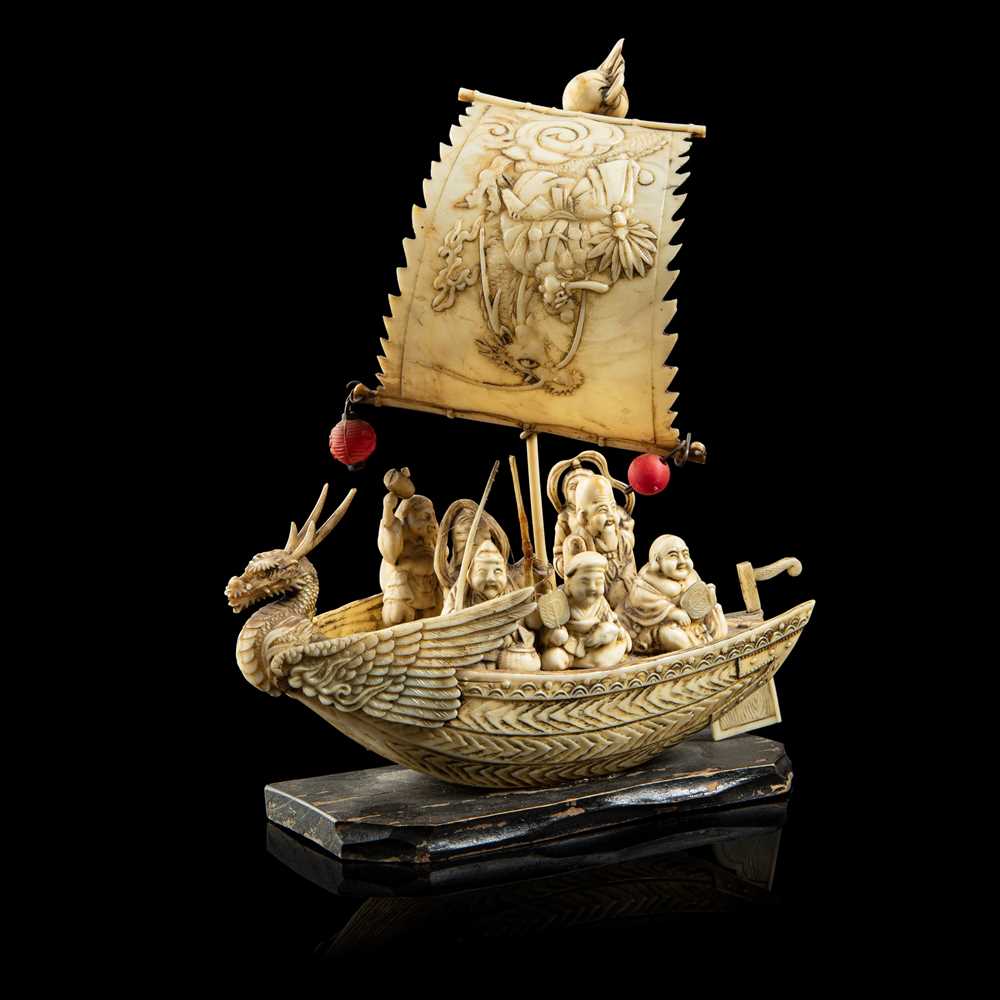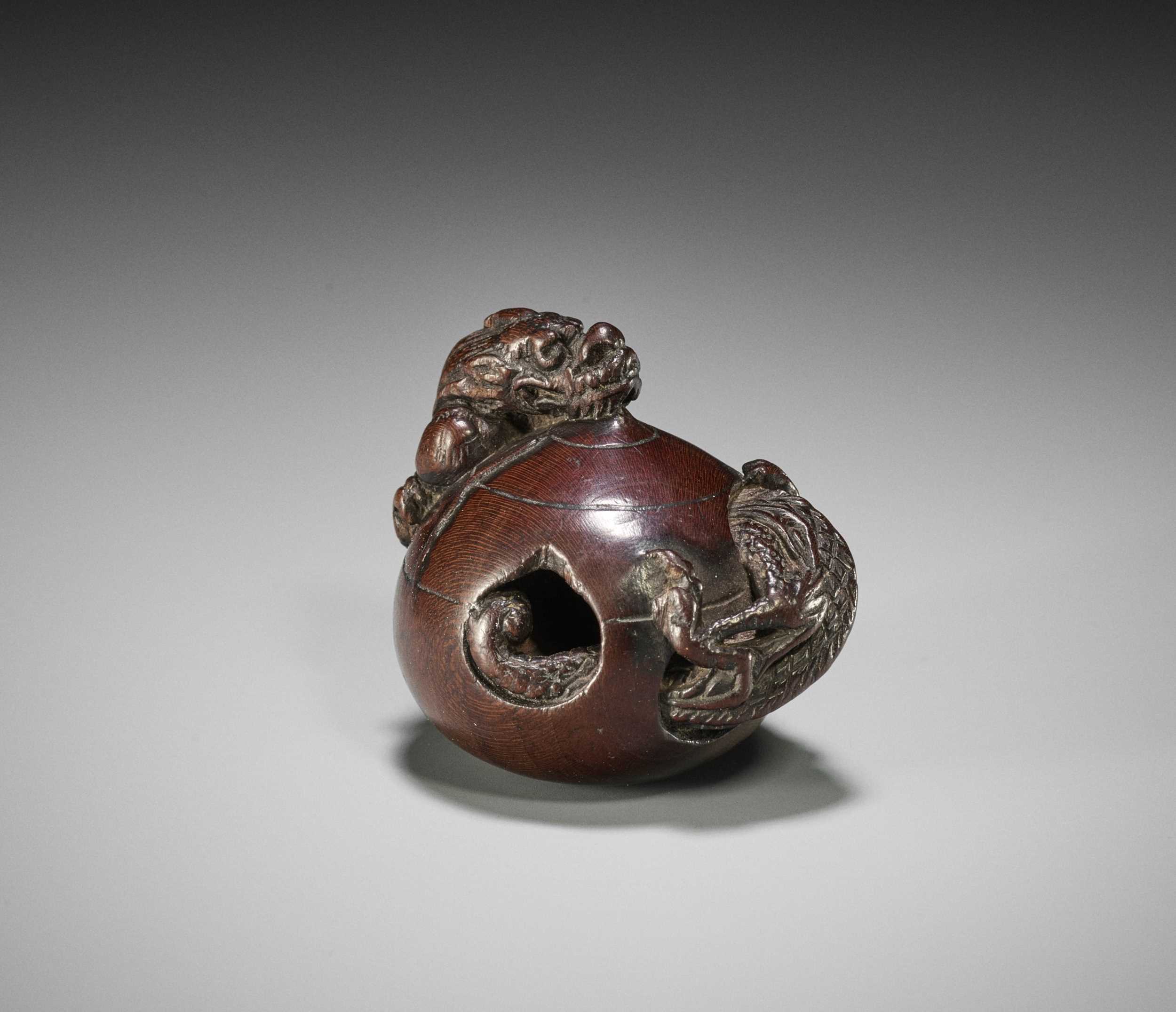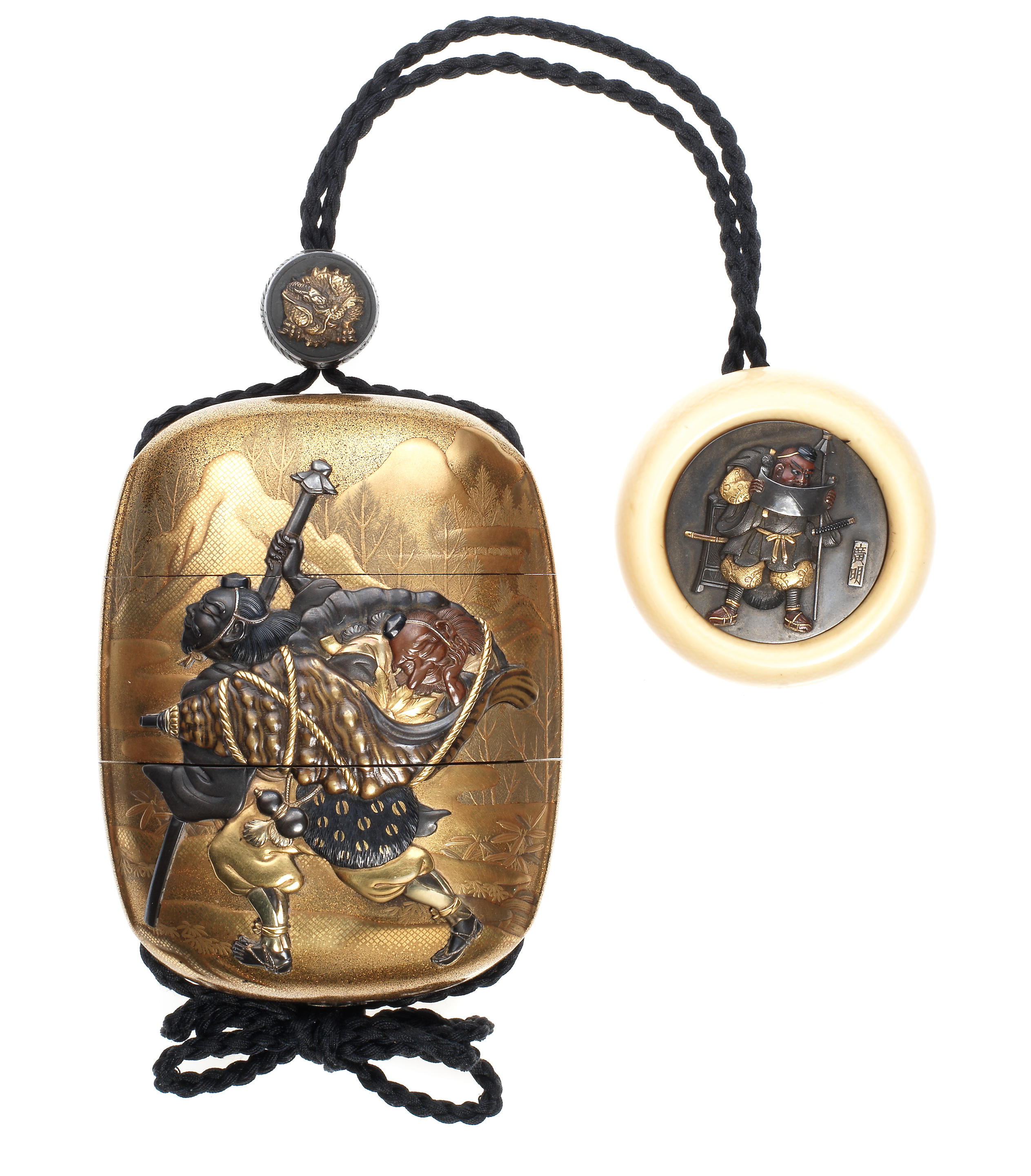Japan, late 19th century, Meiji period (1868-1912) This is an exceptional bronze ensemble, reminiscent of one of the most iconic images of modern art, the Great Wave of Kanagawa, created by Katsushika Hokusai in 1831. The ingenuity of this composition is quite unique, as it depicts an enormous wave about to crash down upon frail crabs and octopuses beneath, while the cresting foam on top wraps around a bronze sphere, neatly incised with a dragon holding the magic pearl, and a crow-beaked karasu tengu about to take off from its peak. The waves altogether form a frame through which we observe the ‘floating’ sphere. The inevitable breaking, that we seem to await, creates a ‘magic’ tension in this artwork. HEIGHT 51 cm WEIGHT 6.8 kg Condition: Very good condition with minor traces of use, old wear and superficial scratches, some casting flaws and pitting, minuscule dents and nicks here and there, minimal warping, some corrosion to underside of base, overall exactly as expected for a bronze of this size and age. Fine, naturally grown deep-brown patina overall. Provenance: From a private collection Paris, France. The ‘Kanagawa’ wave has been influential on generations of artists both in the East and the West. The energy it conveys echoes similar approaches to render the sublime of nature in 19th century European artistic movements. In summer of 1888, Van Gogh had written passionately to his brother that “These waves are claws, you can feel it. Ah well, if we made the color very correct or the drawing very correct, we wouldn’t create those emotions”. (Letter 676 to Theo van Gogh) The dragon is associated with a wealth of legend and symbolism in old Japan, signifying both the holy nature of Shinto and the wisdom of Buddhism. Representations of the dragon are found from the earliest historical period, wall paintings in the stone tomb chambers of the Kofun era (4th - 7th centuries) together with tiger, phoenix, and gryphon. In Shinto mythology, the deity Ryujin is a dragon who lives under the sea and bears a jewel that controls the tides. The tengu, or Heavenly Sentinel, is a legendary creature found in Japanese folk religion. Buddhism long held that they were disruptive demons and harbingers of war. Their image gradually softened, however, into one of protective, if still dangerous, spirits of the mountains and forests. Literature comparison: For a silver ornament of a dragon and crystal sphere see Joe Earle, Splendors of Meiji, Treasures of Imperial Japan, Masterpieces from the Khalili, pl. 135.
Japan, late 19th century, Meiji period (1868-1912) This is an exceptional bronze ensemble, reminiscent of one of the most iconic images of modern art, the Great Wave of Kanagawa, created by Katsushika Hokusai in 1831. The ingenuity of this composition is quite unique, as it depicts an enormous wave about to crash down upon frail crabs and octopuses beneath, while the cresting foam on top wraps around a bronze sphere, neatly incised with a dragon holding the magic pearl, and a crow-beaked karasu tengu about to take off from its peak. The waves altogether form a frame through which we observe the ‘floating’ sphere. The inevitable breaking, that we seem to await, creates a ‘magic’ tension in this artwork. HEIGHT 51 cm WEIGHT 6.8 kg Condition: Very good condition with minor traces of use, old wear and superficial scratches, some casting flaws and pitting, minuscule dents and nicks here and there, minimal warping, some corrosion to underside of base, overall exactly as expected for a bronze of this size and age. Fine, naturally grown deep-brown patina overall. Provenance: From a private collection Paris, France. The ‘Kanagawa’ wave has been influential on generations of artists both in the East and the West. The energy it conveys echoes similar approaches to render the sublime of nature in 19th century European artistic movements. In summer of 1888, Van Gogh had written passionately to his brother that “These waves are claws, you can feel it. Ah well, if we made the color very correct or the drawing very correct, we wouldn’t create those emotions”. (Letter 676 to Theo van Gogh) The dragon is associated with a wealth of legend and symbolism in old Japan, signifying both the holy nature of Shinto and the wisdom of Buddhism. Representations of the dragon are found from the earliest historical period, wall paintings in the stone tomb chambers of the Kofun era (4th - 7th centuries) together with tiger, phoenix, and gryphon. In Shinto mythology, the deity Ryujin is a dragon who lives under the sea and bears a jewel that controls the tides. The tengu, or Heavenly Sentinel, is a legendary creature found in Japanese folk religion. Buddhism long held that they were disruptive demons and harbingers of war. Their image gradually softened, however, into one of protective, if still dangerous, spirits of the mountains and forests. Literature comparison: For a silver ornament of a dragon and crystal sphere see Joe Earle, Splendors of Meiji, Treasures of Imperial Japan, Masterpieces from the Khalili, pl. 135.















Testen Sie LotSearch und seine Premium-Features 7 Tage - ohne Kosten!
Lassen Sie sich automatisch über neue Objekte in kommenden Auktionen benachrichtigen.
Suchauftrag anlegen